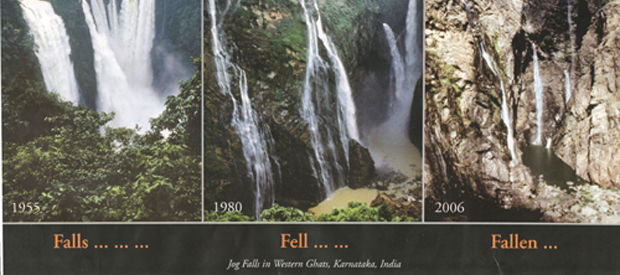Towards Restoring Flows into the Earth’s Arteries
A Primer on Environmental Flows
"We have been taking all the flows from our rivers. Dams have regulated and fragmented the flows – often irreplaceably. More and more dams are still being planned to block the last flow and extract it for human use alone. Before it is too late we must act together to save the world's lifelines. Preface, Towards Restoring Flows into the Earth's Arteries |
Large dams are being promoted as a solution to climate change and South Asia is emerging as a world leader in dam construction. India has more than 5,100 dams and more than 500 either being built or are planned. The need to fight unsustainable large dams was never as urgent in South Asia as it is now. The region is on the brink of a large dam revolution which, if not contained, has the potential to destroy the main watersheds and rivers of the region.
With no mandate to release freshwater flows downstream, existing dams have been redistributing all the water they obstruct, profoundly changing the downstream sociology and ecology. Rivers are drying and flooding at the mercy of powerful demands, severely affecting all dependant riverine life. In this scenario, Environmental Flows, or eflows, is a useful tool to ensure freshwater flows from existing as well as planned dams.
Several books, reports and articles have already been written on the subject. We're releasing this primer for one single reason: World over, it is the local communities directly and severely affected by dams who have valiantly fought these projects, and it is the local communities who hold the potential to reverse the far-reaching impacts that are destroying our rivers. And yet in the ongoing scholastic discourse on eflows, which includes more than 200 methodologies, it is these communities who are continuously sidelined and neglected.
The authors have felt the urgent need to demystify the concept of eflows and write about the subject in a language which can then be used effectively by communities and civil society organizations to demand just eflows. This primer gives an overview of the concept of eflows, methodologies used, implementation and monitoring involved, its role in river basin planning and most fundamentally, the central role communities can and should play in the entire process to ensure that their rivers do not get a raw deal.
It is said that eflows are a matter of social choice and it is time that the discussion is mainstreamed so that it truly reflects the social choice, and not the choice of governments and private dam lobbies. This primer, meant especially for river communities and organizations, aims to mainstream the discussion on eflows from scholarly circles into the realm of groups who can actually bring freshwater back to their rivers.
About the authors
- Latha Anantha, River Research Center, Kerala
- Parineeta Danekar, South Asia Network on Dams Rivers and People, Pune



